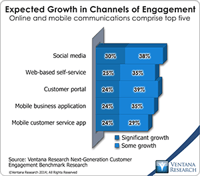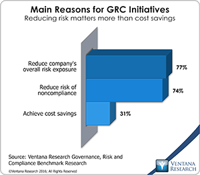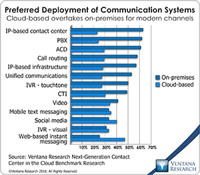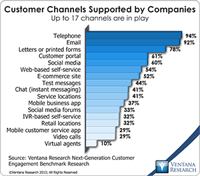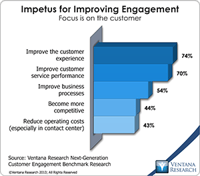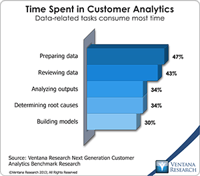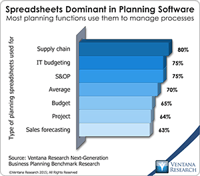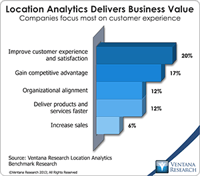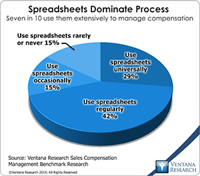In July Salesforce officially closed on its purchase of digital commerce platform provider Demandware for US$2.8 billion. Salesforce’s executives were interested in acquiring a digital commerce platform, and they claim that Demandware was routinely mentioned in their due diligence of the market. So out came Marc Benioff’s and Salesforce checkbook, and they paid. Handsomely. For that sizeable investment, Salesforce will add Demandware’s SaaS-delivered digital commerce capabilities to its...
Read More
Topics:
Social Media,
Mobile Technology,
Office of Finance,
Business Analytics,
Business Collaboration,
Business Intelligence,
Business Performance,
Cloud Computing,
Financial Performance,
Operational Intelligence,
Uncategorized,
Omnichannel, Commerce, Digital kDigital
Today’s proponents of artificial intelligence (AI) tend to focus on its spectacular uses such as self-driving cars and uplifting ones such as medical treatment. AI also has the potential to aid humanity in more modest ways such as eliminating the need for individuals to do tedious repetitive work in white-collar areas. Along these lines, at its recent Vision users conference, IBM displayed an application of its Watson cognitive computing technology designed to automate important aspects of...
Read More
Topics:
Governance,
Office of Finance,
Business Performance,
Cloud Computing,
Financial Performance,
Uncategorized,
Risk & Compliance (GRC),
GRC, governance, risk, compliance, risk management
I recently wrote that companies are struggling to provide omnichannel customer experiences and digital customer service is now seen as a business differentiator. To address these issues, organizations need to change how they use people and processes, and deploy innovative technologies that can support new initiatives. To provide an enterprise-wide solution, contact center systems fall into four categories: communications, business applications, analytics and self-service. Our benchmark research...
Read More
Topics:
Social Media,
Mobile Technology,
Customer Performance,
Cloud Computing,
Uncategorized,
Call Center
In today’s intensely competitive markets, companies must strive to meet customer expectations during every interaction, and interactions occur through many channels. Our benchmark research into next-generation customer engagement finds that customers use up to 17 channels of engagement. Some channels involve assisted service from employees of the company, and some use self-service technologies such as interactive voice response (IVR), websites, mobile apps and social media, also known as...
Read More
Topics:
Mobile Technology,
Customer Performance,
Cloud Computing,
Uncategorized,
Call Center
Businesses and customers are ready for a new generation of digital commerce technology, but implementing it is challenged by significant barriers in two basic categories: technology commoditization and the lack of an IT and business framework for delivering great customer experiences. Regarding the first, for some companies making large IT purchases, the way an enterprise employs CAPEX and OPEX accounting practices to categorize spending on technology may be a deal-breaker when coupled with the...
Read More
Topics:
Sales Performance,
Social Media,
Mobile Technology,
Wearable Computing,
Customer Performance,
Business Analytics,
Business Collaboration,
Business Intelligence,
Business Performance,
Cloud Computing,
Operational Intelligence,
Uncategorized,
Mobile Marketing Digital Commerce
The blockchain distributed database was invented to create the peer-to-peer digital cash called bitcoin in 2008. Although the future potential of bitcoin and other cryptocurrencies has been debated, the distributed ledger structure using a blockchain database that supports bitcoin is likely to be adopted for a range of commercial and governmental purposes. Distributed ledgers are a secure and transparent way to digitally track the ownership of assets while enabling faster transaction speeds and...
Read More
Topics:
Sales Performance,
Supply Chain Performance,
Customer Performance,
Operational Performance,
Business Performance,
Financial Performance,
Uncategorized,
blockchain, distributed ledger, DLT, ERP, SCM, sup
My colleague David Menninger recently wrote about the SAS Analyst Summit, concluding that “the SAS analytics juggernaut keeps on truckin’.” He observed, as I have done in the past, that SAS has a vast array of products that it regularly updates to keep up with market demand, ensuring it remains one of the premier vendors of data management and analytics systems. Dave’s perspectives provide in-depth insights into what these products do, while I focus on how they help with business outcomes...
Read More
Topics:
Customer Performance,
Uncategorized,
Call Center
I recently wrote about the challenge some companies will face in planning and budgeting when new revenue recognition rules go into effect in most countries in 2018. It’s important for companies that will be affected to be sure they have the appropriate systems, processes and training to handle the more difficult demands imposed by the new rules. With the change in accounting, the time lag between when a contract is signed and when a company recognizes revenue from it may be more variable and...
Read More
Topics:
Big Data,
Sales Performance,
Business Performance,
Financial Performance,
Uncategorized
One aspect of living in downtown Chicago is that there’s always something going on. But as distasteful as the subject matter of certain local events can be, some proceedings can inspire perspectives on a number of topics. One that occurs to me is how the retail industry can apply the new generation of mobile and location-based technologies not only to shape the customer experience but even rescue it from challenging situations. On Nov. 30, 2015, the Chicago Tribune reported that the Black...
Read More
Topics:
Social Media,
Mobile Technology,
Wearable Computing,
Customer Performance,
Business Analytics,
Business Collaboration,
Business Intelligence,
Business Performance,
Cloud Computing,
Operational Intelligence,
Uncategorized,
Mobile, Marketing Location Communication
New standards governing accounting for contracts will go into effect for most companies in 2018. The Financial Accounting Standards Board (FASB), which administers Generally Accepted Accounting Principles in the U.S. (US-GAAP), has issued ASC 606, and the International Accounting Standards Board (IASB), which administers International Financial Reporting Standards (IFRS) used in most other countries, has issued IFRS 15. The two are very similar, and both will enforce fundamental changes in this...
Read More
Topics:
Sales,
Sales Performance,
Business Performance,
Financial Performance,
Uncategorized
